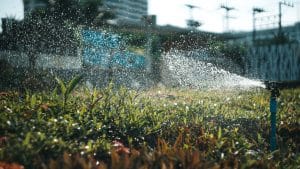Maintaining a beautiful yard doesn’t have to come at the cost of excessive water consumption. Drought-resistant landscaping offers a smart and sustainable solution that allows you to enjoy a stunning outdoor space while being environmentally responsible.
Understanding Drought-Resistant Landscaping
Drought-resistant landscaping, also known as xeriscaping, is an approach that focuses on creating landscapes that require minimal water. It involves careful planning, plant selection, and efficient irrigation methods to ensure that your yard thrives even in dry conditions.
Benefits of Drought-Resistant Landscaping
Why should you consider drought-resistant landscaping?
- Water Conservation: It significantly reduces water usage, helping you save on utility bills and conserve a precious resource.
- Lower Maintenance: Drought-resistant plants generally require less maintenance, saving you time and effort.
- Resilience: These landscapes are more resilient during droughts and extreme weather conditions, ensuring your yard looks great year-round.
- Environmental Impact: By using less water and opting for native plants, you contribute to a healthier ecosystem.
Choosing the Right Plants
Selecting the right plants is at the core of drought-resistant landscaping. Here’s what to consider:
- Native Plants: Native species are adapted to the local climate and often require less water.
- Drought-Tolerant Varieties: Look for plant species that are naturally adapted to arid conditions.
- Group Plants by Water Needs: Group plants with similar water requirements together to optimize irrigation.
- Use Mulch: Mulch helps retain moisture in the soil and reduces evaporation.
Efficient Irrigation Methods
Even in drought-resistant landscapes, efficient irrigation is essential, especially during the establishment phase. Consider the following:
- Drip Irrigation: Drip systems deliver water directly to the roots, minimizing waste.
- Smart Controllers: Use programmable controllers that adjust watering schedules based on weather conditions.
- Rain Barrels: Collect rainwater for irrigation to further reduce reliance on municipal water.
Soil and Mulch Considerations
Healthy soil is the foundation of a thriving landscape. Test your soil to ensure it has the right pH and nutrient levels. Incorporate organic matter to improve water retention. Mulch not only conserves moisture but also regulates soil temperature and reduces weed growth.
Maintenance Tips
While drought-resistant landscaping requires less maintenance than traditional lawns, some care is still necessary:
- Regular Inspections: Check for any signs of stress or disease in your plants.
- Pruning: Prune and trim as needed to promote healthy growth.
- Mulch Renewal: Periodically replenish mulch to maintain its effectiveness.
Conclusion
Drought-resistant landscaping is more than just a trend; it’s a responsible choice for homeowners who care about water conservation and the environment. By choosing the right plants, implementing efficient irrigation methods, and maintaining your landscape, you can create a stunning yard that thrives with minimal water usage.
At Utah Sprinkler Company, we’re committed to helping you achieve your landscaping goals while prioritizing water efficiency. If you need assistance with planning, installing, or maintaining your drought-resistant landscape, visit our website here or call us at 801-692-7315. Together, we can create a beautiful and sustainable outdoor space.




